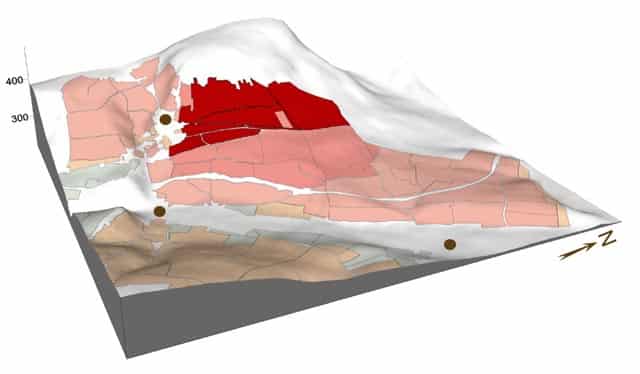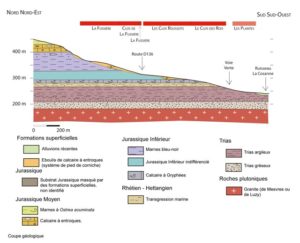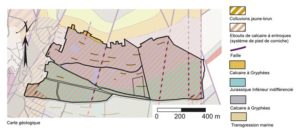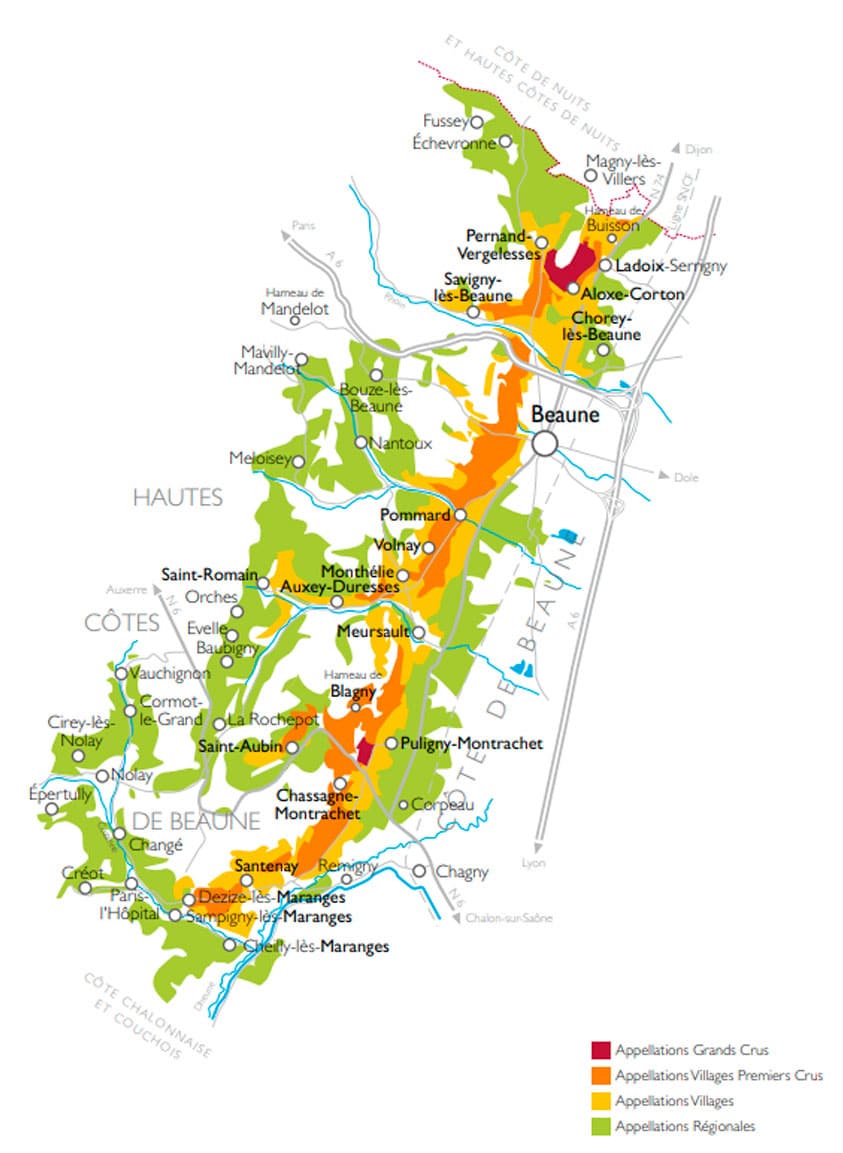Access reserved for producers
of Maranges wines
La Fussière
Surface area of the locality: 11 ha 32 a 16 ca
Covering almost all of the upper part of the Les Maranges premier cru hillside, the locality of La Fussière extends from 294 to 404 metres in altitude (average 335 m).
The slopes are gentle (3%) to very steep (29%!) (average 10%). The Climat is exposed to the South.

The soil and subsoil
The subsoil of the La Fussière locality is fairly homogeneous by nature, but not in its thickness.
The mostly marly Jurassic substratum (grey-black marl, possible giant gryphaea limestone, grey-blue marl) is covered with abundant scree and whole sections of the crinoidal limestone cliff that dominates the wine-producing hillside. The displaced chunks of cliff, of which the top occasionally comes to the surface in the vineyards, form numerous topographic projections along the slope of the locality. The grey-blue marl is exposed where the scree limestone covering is absent or weak.
On the limestone scree that conceals the Jurassic deposits, the soil is stony (frequent chert from the overlying cliff), draining, with highly variable thicknesses. The soil is dark, rich in fossils (belemnite rostrums), where the Jurassic marl is exposed.
The origin of the name
The origin of the name La Fussière is not certain.
The name may originate similarly to the names of the villages Fussey, Foissy (Côte d’Or), Fuissé (Mâconnais) from Fusciacu, Fuscius domain, the name of a Gallo-Roman man inspired from a physical characteristic: fuscus signifying “brown, dark”. However, in the absence of the existence of a Gallo-Roman domain, we can simply see that the earth is brown in La Fussière.
Another possible explanation would derive Fussière from the Latin fascia designating an elongated strip of land, whether it is a section of ploughed field or a terrace of vines, of a portion of hillside between two supporting walls.
The large area of the locality does not allow, either from the colour of the soil, or from the setup of the localities, the substantiation of one or the other hypothesis.
The wines
This is undeniably the most “Maranges” of the premiers crus. Founded on somewhat rustic tannins it offers a digestible and refreshing salinity at the finish. Enjoyed young, it is the companion of oeufs en meurette. As an aged wine, fresh leather notes govern its finish. “Le Clos de la Fussière” is another premier cru that conceals itself inside “La Fussière”. It has the same characteristics.




